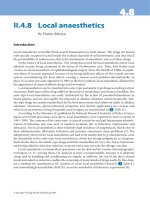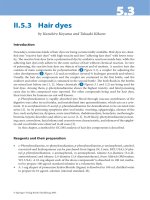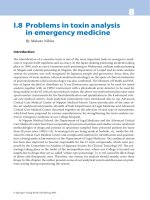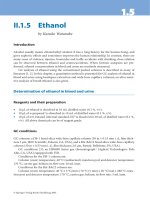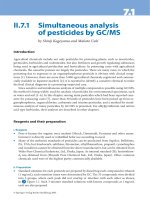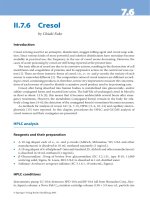Energy Storage in the Emerging Era of Smart Grids Part 15 pdf
Bạn đang xem bản rút gọn của tài liệu. Xem và tải ngay bản đầy đủ của tài liệu tại đây (1.87 MB, 30 trang )
l
a
r
a
l
b
r
b
l
c
r
c
i
ia
i
ib
i
ic
S
11
S
12
S
13
S
21
S
22
S
23
S
31
S
32
S
33
A
B
C
c
b
a
i
a
i
b
i
c
i
la
i
lb
i
lc
C
a
C
c
C
b
v
a
v
b
v
c
PMSM
i
s1
i
s2
i
s3
v
AB
v
BC
v
CA
L
A
R
A
L
B
R
B
L
C
R
C
v
ab
v
bc
v
ca
v
iab
v
ibc
v
ica
v
p1
v
p2
v
p3
T
1
T
2
T
3
v
s12
v
s23
v
s31
N.º S
11
S
12
S
13
S
21
S
22
S
23
S
31
S
32
S
33
v
A
(t) v
B
(t) v
C
(t)
1 1 0 0 0 1 0 0 0 1
v
a
(t) v
b
(t) v
c
(t)
2 0 1 0 0 0 1 1 0 0
v
b
(t) v
c
(t) v
a
(t)
3 0 0 1 1 0 0 0 1 0
v
c
(t) v
a
(t) v
b
(t)
4 1 0 0 0 0 1 0 1 0
v
a
(t) v
c
(t) v
b
(t)
5 0 1 0 1 0 0 0 0 1
v
b
(t) v
a
(t) v
c
(t)
6 0 0 1 0 1 0 1 0 0
v
c
(t) v
b
(t) v
a
(t)
7 1 0 0 0 1 0 0 1 0
v
a
(t) v
b
(t) v
b
(t)
8 0 1 0 1 0 0 1 0 0
v
b
(t) v
a
(t) v
a
(t)
9 0 1 0 0 0 1 0 0 1
v
b
(t) v
c
(t) v
c
(t)
10 0 0 1 0 1 0 0 1 0
v
c
(t) v
b
(t) v
b
(t)
11 0 0 1 1 0 0 1 0 0
v
c
(t) v
a
(t) v
a
(t)
12 1 0 0 0 0 1 0 0 1
v
a
(t) v
c
(t) v
c
(t)
13 0 1 0 1 0 0 0 1 0
v
b
(t) v
a
(t) v
b
(t)
14 1 0 0 0 1 0 1 0 0
v
a
(t) v
b
(t) v
a
(t)
15 0 0 1 0 1 0 0 0 1
v
c
(t) v
b
(t) v
c
(t)
16 0 1 0 0 0 1 0 1 0
v
b
(t) v
c
(t) v
b
(t)
17 1 0 0 0 0 1 1 0 0
v
a
(t) v
c
(t) v
a
(t)
18 0 0 1 1 0 0 0 0 1
v
c
(t) v
a
(t) v
c
(t)
19 0 1 0 0 1 0 1 0 0
v
b
(t) v
b
(t) v
a
(t)
20 1 0 0 1 0 0 0 1 0
v
a
(t) v
a
(t) v
b
(t)
21 0 0 1 0 0 1 0 1 0
v
c
(t) v
c
(t) v
b
(t)
22 0 1 0 0 1 0 0 0 1
v
b
(t) v
b
(t) v
c
(t)
23 1 0 0 1 0 0 0 0 1
v
a
(t) v
a
(t) v
c
(t)
24 0 0 1 0 0 1 1 0 0
v
c
(t) v
c
(t) v
a
(t)
25 1 0 0 1 0 0 1 0 0
v
a
(t) v
a
(t) v
a
(t)
26 0 1 0 0 1 0 0 1 0
v
b
(t) v
b
(t) v
b
(t)
27 0 0 1 0 0 1 0 0 1
v
c
(t) v
c
(t) v
c
(t)
titStitStitSti
ssssssssssb
titStitStitSti
ssssssssssc
titStitStitSti
sssisssis
titHtitHti
sssisssis
titHtitHti
SSSSH
SSSSSSH
SSSSSSH
SSSSSSSSSH
i
i
i
i
Predictive Optimal
Control
End of Predictive
Optimal Control
Values at the sampling
instant t
s
Apply the vector Nº1
Pred ict:
i
sα
(t
s+1
),
i
sβ
(t
s+1
),
i
iα
(t
s+1
),
i
iβ
(t
s+1
)
Quadratic cost
functional for the
matrix output current
errors and matrix
input power factor
error F(t
s+1
)
Vector < 27
yes
No
Output upda te:
S
11
S
33
Select the vector
leading to that
minimum cost
19
Unified Power Flow Controllers Without Energy
Storage: Designing Power Controllers for the
Matrix Converter Solution
Joaquim Monteiro
1
, J. Fernando Silva
2
, Sónia Pinto
2
and João Palma
3
1
Cie3 and ISEL – Polytechnic Institute of Lisbon,
2
Cie3 and IST – Technical University of Lisbon,
3
SIC – National Laboratory for Civil Engineering,
Portugal
1. Introduction
In the last years the growing economic, environmental and social concerns have increased
the difficulty to use fossil fuels, as well as to obtain new licenses to build either transmission
lines (right-of-way) or high power facilities. This led to the continuous growth of
decentralized electricity generation (using renewable energy resources) (Hingorani, 2000).
This scenario has introduced new problems and technical challenges to power systems
researchers and electricity markets participants. One of the main consequences of these
changes has been the substantial increase of power transfer within transmission networks,
approaching their rated capacity and requiring adequate control capability to supply the
continuously growing demand of electric power.
To solve these issues Flexible AC Transmission Systems (FACTS) became a well known
power electronics based solution to control power flow in transmission lines. These systems
are switching controlled converters that operate in real time increasing the transmission
lines power flow capacity up to their thermal limits. Currently, Unified Power Flow
Controllers (UPFC) are the most versatile and complex FACTS enabling accurate and
reliable control of both active and reactive power flow over networks, through load sharing
between alternative line paths (Song et al , 1999).
The original UPFC concept was proposed by L. Gyugyi (Gyugyi, 1992), and consisted of the
combination of a Static Synchronous Compensator (STATCOM) and a Static Synchronous
Series Compensator (SSSC) connected by a common DC link, using large high-voltage DC
storage capacitors. The AC converters sides of these compensators are connected to a
transmission line, through coupling transformers, in shunt and series connection with the
line. This arrangement operates as an ideal reversible AC-AC switching power converter
allowing shunt and series compensation and bidirectional power flow, between the AC
terminals of the two converters.
The DC capacitor bank used in the UPFC topology to link the two back-to-back converters
increases the UPFC weight, cost, occupied area and introduces additional losses. Replacing
the double three-phase inverter by one three phase matrix converter the DC link capacitors
are eliminated, reducing costs, size, maintenance, and increasing reliability and lifetime. The
Energy Storage in the Emerging Era of Smart Grids
426
AC-AC matrix converter, also known as all silicon converter, processes the energy directly
without large energy storage needs, allows bi-directional power flow, while it guarantees
input and output sinusoidal voltages and currents with variable amplitude and frequency
and adjustable power factor. On the other way, the matrix converter control is more
complex than the control of the back-to-back converter.
Over the years the interesting properties presented by the matrix converter pushed the
design of their controllers, so that matrix converters are being used quite successfully in
many industrial applications, such as in power sources for electrical drives with variable
speed (Matsuo et al, 1996), in applications related to power quality enhancement in the
electrical grid (Galkin et al, 2001), in renewable power supply systems (Nikkhjoei et al, 2005)
and also in the compensation of harmonics in power network as dynamic voltage restorers
(DVR) (Wang et al, 2009).
In general, the conventional control methods of UPFCs are based on power systems
linearized models, valid around an operating point. Usually, these linearized models do not
guarantee robustness and insensitivity to the parameters and may give rise to poor dynamic
response and/or undesired instability, since most of these controllers do not have the
capacity to adapt to nonlinearities or continuously changing dynamics of the power system
(Monteiro et al, 2005), (Liu et al, 2007). In addition, many of the control strategies used in the
UPFC are based in proportional integral controllers obtained from its dynamic model in dq
coordinates to improve performance and reduce the interaction between the control of
active and reactive power (Round et al, 1996).
In this chapter, the use of a UPFC without energy storage, based on a matrix converter
topology, is proposed to control the active and reactive power flow in the transmission line
(section 2). Decoupled controllers (Verveckken et al, 2007) using the inverse dynamics
linearization approach are proposed for active and reactive power control. These controllers
allow the elimination of the cross-coupling effect between active and reactive power
controllers and fast response (section 3). The designed controllers are implemented using
digital signal processing (DSP) hardware together with a matrix converter prototype and
laboratory equipment to emulate the power network (section 4). The dynamic and steady-
state performance of the proposed power control methods are evaluated both by simulation
and by experimental results (section 5). Finally, conclusions are listed regarding the
behaviour of the overall matrix converter based UPFC when operated with the proposed
active and reactive power controllers (section 6).
2. Modelling of UPFC power system
A simplified power transmission network using the proposed matrix converter based UPFC
is presented in Fig. 1. In this scheme V
S
and V
R
are, respectively, the sending-end and
receiving-end sinusoidal voltages of the G
S
and G
R
generators feeding load Z
L
consisting of a
resistance R
L
and an inductance L
L
. The matrix converter is connected to transmission line 2,
represented as a series inductance and resistance (L
L2
, R
L2
), through coupling transformers,
T
1
in the shunt side and T
2
in the series side.
A detailed diagram of the UPFC system showing the connection of the matrix converter to
the transmission line, in Fig. 2, includes three-phase shunt input transformer (T
a
, T
b
, T
c
),
three-phase series output transformer (T
A
, T
B
, T
C
) and a three-phase matrix converter. In this
diagram, the three-phase LCr input low pass filter is required to re-establish a voltage–
source boundary to the matrix converter, also enabling smooth input currents.
Unified Power Flow Controllers Without Energy Storage:
Designing Power Controllers for the Matrix Converter Solution
427
Fig. 1. A transmission network with a matrix converter UPFC.
Fig. 2. Detailed matrix converter based UPFC.
The next subsections will detail the matrix converter and the UPFC dynamic model.
2.1 Matrix converter model
The matrix converter UPFC system (Fig. 2) modelling assumes ideal voltage sources and
ideal shunt and series transformers. Considering also ideal power semiconductors, each
matrix converter bi-directional switch S
kj
(k, j∈{1,2,3}) can only have two possible states:
“S
kj
=1” if the switch is closed or “S
kj
=0” if the switch is open. The nine switches of the matrix
converter can be represented as a 3x3 matrix (1):
11 12 13
21 22 23
31 32 33
SSS
SS S S
SSS
⎡
⎤
⎢
⎥
=
⎢
⎥
⎢
⎥
⎣
⎦
(1)
The matrix converter topological constraints imply that
3
1
1
kj
j
S
=
=
∑
, for all k∈{1,2,3}.
Energy Storage in the Emerging Era of Smart Grids
428
According to (1), the relationship between load and input voltages can be expressed as:
T
ABC
vvv =
⎡⎤
⎣⎦
S
T
abc
vvv
⎡
⎤
⎣
⎦
(2)
Using the transpose of matrix
S, the input phase currents can be related to the output phase
currents, by (3).
T
abc
iii =
⎡
⎤
⎣
⎦
S
T
T
ABC
iii
⎡
⎤
⎣
⎦
(3)
From the 27 possible switching patterns (
3
3
), time variant vectors can be obtained (Pinto et
al, 2001), representing the output voltages and input currents in
αβ
coordinates.
The command of the matrix converter switches can be accomplished using a Venturini
based high frequency PWM modulator (Alesina et al, 1981) , (Wheeler, 2002) (4).
()
()
{
()
()()
}
2
() 13 13
43 3 3
,,; ,, ; ; 0,2 3,4 3
kj k j i
ik i
oi k
mt vv V
q sen t sen t
kabcjABCqVV
ωβ ω
β
ππ
=+ +
+−
== = =
(4)
This PWM method yields near sinusoidal output voltages with amplitude defined by an
active power controller and phase defined by a reactive power controller, as well as almost
sinusoidal input currents with near unity input power factor, if needed.
2.2 UPFC dynamic model
The scheme presented in Fig. 3 shows the simplified three-phase equivalent circuit of matrix
UPFC transmission system model. For dynamic system modelling, the power sources and
the coupling transformers are all considered ideal, including the matrix converter
represented as a controllable voltage source, with amplitude V
C
and phase
ρ
.
In this circuit L
2
and R
2
are, respectively, the Thévenin equivalent inductance and resistance
calculated by:
221
//
LL L
LL L L=+ and
221
//
LL L
RR R R=+ . Besides, V
R0
is the voltage at
the load bus.
Fig. 3. Three phase equivalent circuit of matrix UPFC and transmission line.
Unified Power Flow Controllers Without Energy Storage:
Designing Power Controllers for the Matrix Converter Solution
429
Considering a symmetrical and balanced three phase system and applying Kirchhoff laws to
the three phase equivalent circuit in Fig. 3, the dynamic equations of AC line currents are
obtained in dq coordinates as follows:
()
2
0
22
1
d
q
dLdRd
dI
R
II VV
dt L L
ω
=− + − (5)
()
2
0
22
1
q
d
q
L
q
R
q
dI
R
IIVV
dt L L
ω
=− − + −
(6)
In the last equations, V
Ld
and V
Lq
are introduced for notation simplicity and are given by:
V
Ld
=V
Sd
+V
Cd
and V
Lq
=V
Sq
+V
Cq
.
Applying Laplace transform to system transfer functions (5) and (6), equation (7) is
obtained:
0
2
0
22
1
d
q
Ld R d
q
L
q
R
q
d
II VV
R
s
IVV
LL
I
ω
−
⎡
⎤⎡⎤ ⎡ ⎤
⎛⎞
+=+
⎢
⎥⎢⎥ ⎢ ⎥
⎜⎟
⎜⎟
−
−
⎢
⎥⎢⎥ ⎢ ⎥
⎝⎠
⎣
⎦⎣⎦ ⎣ ⎦
(7)
Solving (7) in order to the line currents I
d
I
q
, equation (8) may be obtained as a function of
voltages V
Ld
, V
Lq
and V
R0d
, V
R0q
at the receiving end.
2
2
2
2
0
2
2
0
2
2
2
1
dLdRd
q
L
q
R
q
R
s
L
R
L
s
IVV
L
IVV
R
s
L
ω
ω
ω
⎡⎤
+
⎢⎥
⎢⎥
⎢⎥
−+
⎢⎥
−
⎡
⎤⎡⎤
⎣⎦
=
⎢
⎥⎢⎥
−
⎢
⎥⎢⎥
⎛⎞
⎣
⎦⎣⎦
++
⎜⎟
⎝⎠
(8)
Active and reactive powers of sending end generator are given in dq coordinates by (9):
Sd Sq
d
q
Sq Sd
VV
I
P
I
QV V
⎡⎤
⎡
⎤
⎡⎤
=
⎢⎥
⎢
⎥
⎢⎥
−
⎢
⎥⎢ ⎥
⎣⎦
⎣
⎦
⎣⎦
(9)
The active and reactive power controllers will be designed based on the previous equations.
3. Designing active and reactive power controllers
In this chapter, new linear controllers will be derived in dq coordinates to guarantee no
cross-coupling between active and reactive power controllers and fast response, using
inverse dynamics linearization. The synthesis of these controllers is also based on a modified
Venturini high frequency modulator.
3.1 Matrix converter UPFC controllers design by inverse dynamics linearization
The dynamic equations of UPFC model (8) show that there is no dynamics related to the
power sources voltages, which are considered ideal. So in dq Laplace domain the power
Energy Storage in the Emerging Era of Smart Grids
430
sources voltages are constant. Assuming both V
ROd
and V
Sd
as constant and a rotating
reference frame synchronized to the V
S
source so that V
Sq
=0, active and reactive power P
and Q will be obtained by (10) and (11).
Sd d
PVI= (10)
Sd q
QVI=−
(11)
The synthesis of active and reactive power controllers is obtained substituting the previously
calculated currents in
dq coordinates (8) on (10) and (11). Active and reactive powers are
obtained as a function of transmission line parameters, load bus and sources voltages.
()
()
()()
()
()()
22 0 20
22
22 2
22 2
22
22 2
Sd R d R
q
Sd
Cd Cq
Sd
sL R V V L V
PV
sL R L
sL R V L V
V
sL R L
ω
ω
ω
ω
+−−
=
++
++
+
++
(12)
()
()
()()
()
()()
220 2 0
22
22 2
222
22
22 2
R
q
Sd R d
Sd
Cd Cq
Sd
sL R V L V V
QV
sL R L
LV sL R V
V
sL R L
ω
ω
ω
ω
++−
=
++
−+
+
++
(13)
Both active and reactive powers, obtained respectively by equations (12) and (13), consist of
an uncontrollable constant part (
P
i
, Q
i
) based on sending end power source voltages and line
impedance, and a controllable dynamic part (
ΔP, ΔQ) determined by the matrix converter
voltages. These relationships are presented in (14) and (15).
i
PP P=+Δ (14)
i
QQ Q=+Δ (15)
From (12) and (13), the controllable part of steady-state active and reactive power (
ΔP, ΔQ)
can be obtained expressed as a function of matrix converter voltages in
dq coordinates
according to (16).
()()
()
22 2
22
222
22 2
.
Cd
Sd
C
q
V
sL R L
P
V
V
LsLR
Q
sL R L
ω
ω
ω
⎡
⎤
+
Δ ⎡⎤
⎡⎤
=
⎢
⎥
⎢⎥
⎢⎥
−+
Δ
⎢
⎥
++
⎣⎦
⎣⎦
⎣
⎦
(16)
The controllable part of the active and reactive power flow components (16) may be written
as in (17), introducing a matrix
G
C
for notation simplicity.
det
Cd
Sd
C
C
q
C
V
P
V
G
V
Q
G
⎡
⎤
Δ
⎡⎤
=−
⎢
⎥
⎢⎥
Δ
⎡⎤
⎢
⎥
⎣⎦
⎣⎦
⎣
⎦
(17)
Unified Power Flow Controllers Without Energy Storage:
Designing Power Controllers for the Matrix Converter Solution
431
In (17) matrix G
C
depends on the transmission line parameters (18) and its determinant is
()()
22
22 2
det
C
GsLR L
ω
=− + −
⎡⎤
⎣⎦
.
()
22 2
222
C
sL R L
G
LsLR
ω
ω
+
⎡
⎤
=
⎢
⎥
−+
⎣
⎦
(18)
The next section will present the controllers design based on the inverse dynamics
linearization of the power system model.
3.2 Inverse dynamic linearization of the power system model
The proposed power controllers design use the inverse model of the power system to
linearize and decouple active and reactive power control, calculating the control signals
V
Cd
and
V
Cq
as a function of the active and reactive power flow components
Δ
P,
Δ
Q. Knowing
that
()
1
det .
CCC
GGG
−
=−
⎡⎤
⎣⎦
, equation (19) is obtained.
1
Cd
C
Cq
Sd
V
P
G
V
Q
V
⎡⎤
Δ
⎡
⎤
=
⎢⎥
⎢
⎥
Δ
⎢⎥
⎣
⎦
⎣⎦
(19)
Considering a feedback loop controller topology for the power components, using the
inverse system model (19) to design the controllers, and adding a linear integral controller to
obtain zero static error, two decoupled equivalent systems with a first order system
behavior with time constant
T
P
(being [
Δ
P
Δ
Q]
T
=1/(sT
P
+1)[
Δ
P
ref
Δ
Q
ref
]
T
can be obtained
using (20).
1
ref
ref
p
PP
P
QQQ
sT
Δ−Δ
⎡
⎤
Δ
⎡⎤
=
⎢
⎥
⎢⎥
ΔΔ−Δ
⎢
⎥
⎣⎦
⎣
⎦
(20)
Multiplying both members of equation (20) by
G
C
/V
Sd
control variables V
Cd
and V
Cq
are then
obtained in (21) as independent functions of the active and reactive power errors,
respectively.
1
ref
Cd
C
Cq
ref
Sd p
PP
V
G
V
VsT
Δ−Δ
⎡
⎤
⎡⎤
=
⎢
⎥
⎢⎥
Δ−Δ
⎢
⎥⎢ ⎥
⎣⎦
⎣
⎦
(21)
Based on the previous equations, the block diagram of Fig. 4 is obtained, representing the
closed loop control system with decoupled active and reactive powers.
Fig. 4. Block diagram in closed loop control with active and reactive power decoupling.

